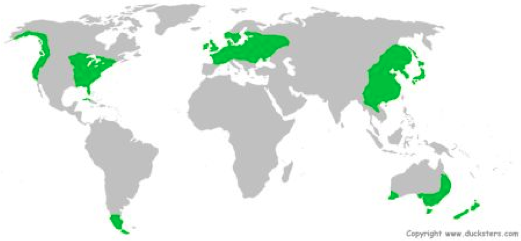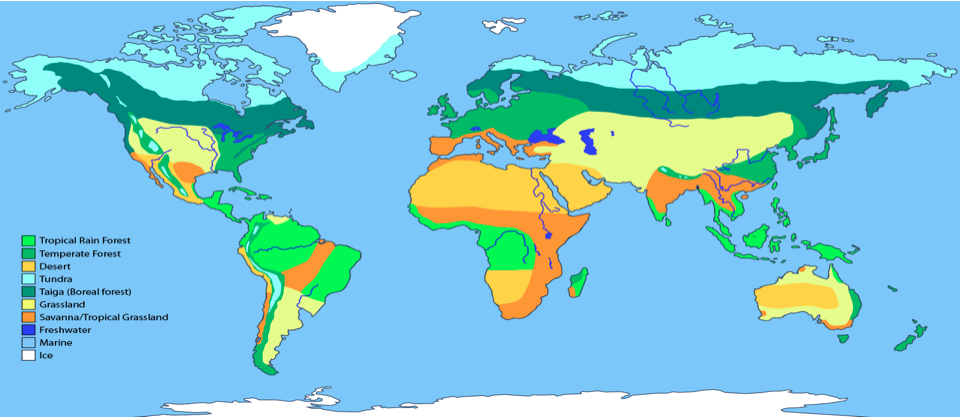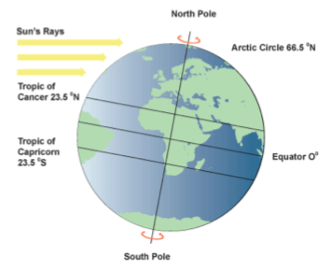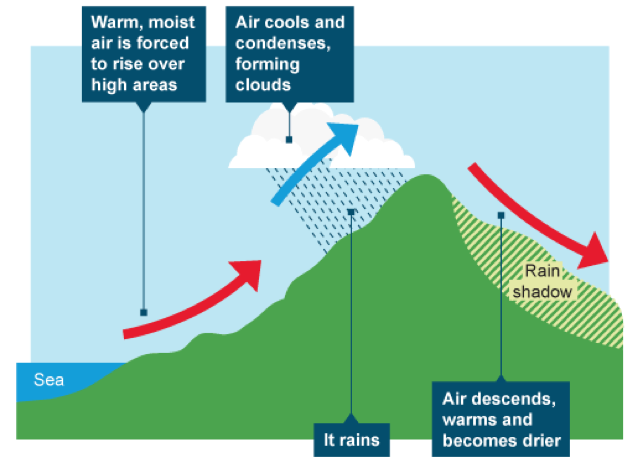Global Biomes
Different Biomes
If the UK was a totally natural environment, with no urban areas or farming, almost all of it would be covered by temperate forest biome.
Temperate forests consist of deciduous trees that lose their leaves in autumn. The forest is dominated by oak, ash and hazel.
Biome Distribution
Ecosystem – all of the living things in a given area, interacting with each other and with their non-living environments.
Biome – A very large ecosystem. The rainforests are one biome, deserts are another.
Biosphere – The zone where life is found, it extends to -3m and +30m.
Factors Affecting Distribution
Temperature – locations near the equator receive more intense sunshine as sun rays are high all year, therefore temperature is high. As latitude increases, sunshine intensity decreases and temperature decreases.
Precipitation – Linked to air pressure. Precipitation is high where hot and cold air meet. (mid latitudes and the equator) These meeting points change due, and can cause uncertainty in where the rain will fall.
Other Factors Affecting Distribution
“Local factors are differences that alter animal and plant species in a biome, from ones we would expect.”
Local Factors Include
Drainage
In areas with impermeable rock, marshes and swamp land starts to develop, with different animal and plant species, due to the fact that the water cannot drain through the bedrock.
Soils
Areas of alkaline and acidic soil have very different vegetation types. Ash and beech trees are found in alkaline soils, and willow and birch trees are found in acidic soil.
Altitude (Height of Land)
Temperatures decrease by 6.5degrees every 1000 m, this impacts on vegetation and the entire ecosystem.



